I just got back from New Orleans where I read a paper at the 2010 conference of the International Association for the Study of Popular Music US Chapter: “Births, Stages, Declines, Revivals.” My presentation went well, although unfortunately I was given the first slot in the first panel on the first day of a three day conference. (8:30 AM on Friday morning!) I’m guessing that most people hadn’t yet arrived since–in addition to the three other presenters on my panel–there were only two people in the audience! Oh well.
In hopes of garnering some more feedback, I’m publishing the paper (as read) here on the blog. As usual, this remains a work in progress.
Click here to download a PDF version of the paper. (Slides and visual examples appear at the end of the PDF.) Or, follow the jump to read the html version.
Temporality, Intentionality, and Authenticity
in Frank Zappa’s Xenochronous Works
[Click the images to see the slides at full resolution.]
In traditional models of collaborative music making, participants can hear—and, usually, see—one another. Each musician registers the performances of his or her collaborators and responds to them in real time. Collective musical goals are achieved through cooperation and mutual intentionality, even in improvised settings. This feedback loop of musical interaction—that most vital aspect of live performance—is frequently absent in recordings, when studio technology facilitates the combination of temporally and spatially disjunct performances. Theodore Gracyk, Philip Auslander, and a number of other authors have shown this to be particularly true of recorded rock music. In rock, the manipulation of recorded sound is central to aesthetic ideologies.
Lee B. Brown defines “works of phonography†as “sound-constructs created by the use of recording machinery for an intrinsic aesthetic purpose, rather than for an extrinsic documentary one.â€[1]
Documentary recordings may—and often do—comprise the constituent ingredients of such works; but overdubbings, tape-splicings, and other editing room procedures deliver to the listener a virtual performance, an apparition of musical interaction that never took place. Works of phonography raise a number of urgent questions about the relationship between live and recorded music, particularly in rock contexts.
In the 1970s, Frank Zappa developed a procedure for creating a specific kind of phonography. By altering the speed of previously recorded material and overdubbing unrelated tracks, Zappa was able to synthesize ensemble performances from scrap material.
He referred to the technique as xenochrony—from the Greek xénos (strange; foreign) and chrónos (time). Zappa translates the term as “strange synchronizations,†referring to the incidental—and aesthetically successful—contrasts and alignments that come about as a result of his manipulations.
Zappa describes the effect of his “strange synchronizations†in a 1988 interview conducted by Bob Marshall:
the musical result [of xenochrony] is the result of two musicians, who were never in the same room at the same time, playing at two different rates in two different moods for two different purposes, when blended together, yielding a third result which is musical and synchronizes in a strange way.[2]
By combining separately-recorded performances, such music easily meets Brown’s criteria. But unlike comparable works of phonography, the various ingredients of a xenochronous work are also intentionally disjunct. Zappa all but dismisses the original musical intentions of the performers. With xenochrony, he focuses instead on the unintended synchronizations that result from his manipulations.
In many cases, rock artists and producers mask their methods. Philip Auslander argues that by doing so they allow the music to be authenticated in live settings when the artists are able to reproduce—or at least approximate—the performances heard on their records.[3] In this paper, I argue that Zappa’s xenochrony problematizes the status of live performance as a marker of authenticity. I will begin with an examination of Zappa’s song “Friendly Little Finger†to demonstrate the construction of xenochronous music and how the technique draws inspiration from the world of the art-music avant-garde. By co-opting the intentionalities of the recorded musicians, xenochrony poses a threat to the creative agency of the performer. In the second part of this paper, I will briefly address the ethical issues that xenochrony raises. Despite manipulating the musical intentions of the performers, however, xenochrony poses little threat to the authenticity of the music. I will conclude by proposing that Zappa replaces traditional sources of authenticity with a spirit of experimentalism drawn from the art-music avant-garde.
I. Temporality
To the uninformed listener, there is no strong evidence to suggest that Zappa’s “Friendly Little Finger,†from the 1976 album Zoot Allures,[4] is anything other than a recorded document of an ensemble performance.
The piece begins with a brief introduction featuring a repeated riff performed on guitar, marimba, and synthesizer. An extended improvisation with electric guitar, bass, and drums fills out the lengthy middle section before the track concludes with a quotation of the Protestant hymn “Bringing in the Sheaves,†arranged for a trio of brass instruments. Despite its apparent normalcy, however, “Friendly Little Finger†combines materials from four distinct sources spanning three years of Zappa’s career.
The primary recording—a guitar solo with a droning bass accompaniment—was recorded in the dressing room of the Hofstra University Playhouse as a warm-up before a performance on October 26, 1975. Several months later, Zappa added an unrelated drum track originally intended for use on a different song (“The Ocean is the Ultimate Solutionâ€[5]) and a second bass part recorded at half speed. These three recordings, all appearing in the middle solo section, comprise the xenochronous core of the piece. To this, Zappa superimposed two additional recordings. The introduction comes from the same session as the added bass part, and the coda was recorded several years earlier, during a session for the song “Wonderful Wino.”
As Example 1 makes clear, the result of Zappa’s editing is a moderately dense network of temporally disjunct recordings. How is it that such seemingly disparate recordings happened to come together in this way? What inspired Zappa to take such an approach to manipulating recorded sound? Of course, examples of overdubbing in American popular music can be found at least as far back as the 1940s—recall Sidney Bechet’s One Man Band recordings in which each instrument was performed separately by Bechet himself. But while such tricks had become old hat by the mid 1970s, xenochrony stands out for it also has obvious ties to the twentieth-century art-music avant-garde.
Despite his continuing reputation as a popular musician, Zappa was remarkably well read in the theoretical discourse surrounding avant-garde art music, particularly with regards to musique concrète and tape music. He expressed an ongoing interest in John Cage’s chance operations, for example, trying them out for himself by physically cutting recorded tapes and rearranging the pieces at random for the 1968 album Lumpy Gravy.[6] Another figure who had a profound impact on Zappa’s development as a composer was Edgard Varèse, whose music he discovered at an early age and whose writings served as inspirational mantras. Given this fascination with the avant-garde, xenochrony may be best understood as a conscious attempt by Zappa to model himself on these influential figures. His own approach to music and composition would therefore require an analogous theoretical foundation.
Xenochrony is closely tied to Zappa’s conception of temporality. Zappa often described time as a simultaneity, with all events occurring at once instead of chronologically. Toward the end of his life, in an oft-quoted conversation with cartoonist Matt Groening, Zappa explained that the idea was rooted in physics:
I think of time as a spherical constant, which means that everything is happening all the time. […] They [human beings] take a linear approach to it, slice it in segments, and then hop from segment to segment to segment until they die, and to me that is a pretty inefficient way of preparing a mechanical ground base for physics. That’s one of the reasons why I think physics doesn’t work. When you have contradictory things in physics, one of the reasons they became contradictory is because the formulas are tied to a concept of time that isn’t the proper model.[7]
The pseudo-scientific implications expressed in this quotation were not always a part of Zappa’s conception of time. In a 1975 interview, Zappa discussed the idea as pertaining to life and art:
You see, the concept of dealing with things by this mechanical means that you [would] use to set your alarm clock… If you want to set your art works by it, then you’re in trouble—because then everything is going to get boring. So I’m working on a different type of a time scale.[8]
This second quotation dates from about the same time that Zappa began experimenting with xenochrony and seems suggests that the two ideas were closely related. Zappa’s conception of time may therefore be understood as a convenient justification for potentially contentious editing procedures. Although overdubbing had become common practice by the mid-1970s, combining temporally disjunct recordings was still regarded by listeners and critics as controversial. By reconfiguring the very concept of time, Zappa skirts the issue.
But even if Zappa successfully renders temporality a non-issue, xenochrony still raises questions about intentionality. Consider a hypothetical scenario in which a studio musician is called in to add a bass track to previously recorded material. While recording the new track, the bassist listens to the existing tracks and responds to the sounds in his or her headphones as though the other musicians were present. (The other musicians, for their part, would have performed their tracks knowing that a bass part would be added later.) Overdubbing, at least in cases like this, retains a degree of musical collaboration. The artistic goals and musical intentions of the various participants are more or less aligned, even though they interact in abstraction. Xenochrony, however, dispenses with intentionality altogether. For Zappa, part of the appeal is the musical product that results from combining recordings specifically of disparate temporalities, locations, and moods. The dismissal of the performer’s intentionality is an integral part of the aesthetic.
II. Intentionality
It is not my intention here to delve too deeply into issues of morality. Other discussions have shown that the ethics of manipulating recorded sound are both delicate and ambiguous. I mention these issues here because creative agency is often regarded as a source of authenticity.
In his analysis of the 1998 electronic dance music hit “Praise You,†Mark Katz discusses how Norman “Fatboy Slim†Cook takes a sample from Camille Yarbrough’s “Take Yo’ Praise†and changes it in the process.[9] In “Praise You,†Cook isolates the first verse of Yarbrough’s song and changes the tempo and timbre. Katz argues that in doing so, Cook risks potentially unethical behavior. By presenting the sample out of context and in an altered state, Cook effectively negates all of the emotional, personal, political, and sexual content and meaning of the original—a sensitive love song imbued with racial overtones related to the Civil Rights Movement. Cook therefore presents a threat to Yarbrough’s artistic agency. Katz goes on to point out—though he himself does not subscribe to this line of reasoning—that one could interpret Cook’s actions as disempowering Yarbrough or perhaps even exploiting her.
Zappa takes similar risks with xenochrony. Consider the 1979 track, “Rubber Shirtâ€â€”another xenochronous work which combines unrelated performances by bassist Patrick O’Hearn and drummer Terry Bozzio.
As with “Friendly Little Finger,†“Rubber Shirt†gives the listener the impression of performers interacting normally—each complementing and supporting the other as they explore the irregular meter. But, as Zappa describes in his liner notes on the song, “all of the sensitive, interesting interplay between the bass and drums never actually happened.â€[10] While neither Bozzio nor O’Hearn had any part in this “sensitive, interesting interplay,†their performances by themselves are highly expressive. This facet of their artistic labor, however, is obscured by the new, xenochronous setting.
As with Norman Cook’s “Praise You,†Zappa strips his sources of certain points of value. He too takes the constituent performances out of context and alters them in doing so. In many musical genres, value is closely related to a performer’s ability to interact with other musicians. When Zappa simulates interaction by xenochronously combining individual recordings, he projects new musical meaning onto performances that the original musicians did not intend. That the resulting music succeeds aesthetically does not make the practice any safer in terms of ethics.
Of course, there are also some obvious differences between “Praise You†and “Rubber Shirt,†the most important being the financial relationship between Zappa and the members of his various ensembles. O’Hearn and Bozzio were paid employees, hired to perform Zappa’s music. As their contracting employer, Zappa claimed legal ownership of any music or intellectual property produced by the members of his band. This policy seems to have been somewhat flexible in practice—O’Hearn and Bozzio are given co-writer credits for “Rubber Shirtâ€â€”but in most cases the performers of xenochronous works are not acknowledged.
Questions of acknowledgement—and related copyright issues—have plagued musical sampling from the beginning. But again, xenochrony complicates the issue. Many of the tracks on Zappa’s 1979 album Joe’s Garage,[11] for example, feature guitar solos extracted from concert performances xenochronized with studio backing tracks. All of the audible musicians are credited in the liner notes. But what of the musicians that aren’t audible? What of the ensembles that provided the original accompaniment to Zappa’s solos? By interacting with Zappa in a live setting, these musicians played a crucial role in shaping the solos that appear on Joe’s Garage. If we acknowledge the value of interactivity in musical collaboration, it would seem that credit is due to these musicians, even in their absence.
III. Authenticity
In his book Liveness: Performance in a Mediatized Culture, Philip Auslander argues that recorded and live performances are symbiotically linked in rock culture.[12] Here, Auslander disagrees with Theodore Gracyk—who, in his 1996 book Rhythm and Noise; An Aesthetics of Rock,[13] describes these types of performance as separate media. Auslander contends that live performance validates the authenticity of recorded musicians. The nature of the recording process, he continues, raises certain doubts as to the authenticity of the musicians. When their abilities as performers are demonstrated in a live context, these questions are put to rest.[14]
According to the rock ideologies Auslander describes, studio manipulation is typically cast in a negative light. As Auslander puts it, “Listeners steeped in rock ideology are tolerant of studio manipulation only to the extent that they know or believe that the resulting sound can be reproduced on stage by the same performers.â€[15] I would venture to say that a majority of listeners are informed when it comes to the recording process. Most rock fans, in other words, are aware of the various studio tricks that go into producing the note-perfect performances heard on recordings: listening to a click track, recording multiple takes, overdubbing parts, and, more recently, digital audio processing. Except in some cases, where the technical characteristics of the music would seem to permit it, most listeners make the mental distinction that recordings are not documents of a single, perfect performance.
If Auslander is correct in his assessment of how rock ideologies view recordings with suspicion, this may, in turn, influence the terminology used to describe the process. Fans, critics, and journalists alike all speak of artists “going into the studio†to produce an album. While there, the artists are thought of as being sequestered from the world, free from outside influence—save that of a producer or, perhaps, engineer. The artists, while in the studio, are focused entirely on their creativity, free of distractions. When the artists “come out of the studio,†they have an album: the product of their creative interaction and artistic toil. Such discourse paints the studio process as having a certain purity.
Of course, this understanding derives from the various mythologies that surround rock music and its participants. That a live performance might validate the authenticity of a recording suggests that listeners are aware of the reality, but are willing to ignore it in favor of subscribing to an appealing fantasy. In Zappa’s case, however, these processes are intentionally integrated. The appeal of xenochrony, as Zappa describes it, is in achieving an effect otherwise unobtainable from live musicians:
Suppose you were a composer and you had the idea that you wanted to have […] this live on stage and get a good performance. You won’t get it. You can’t. You can ask for it, but it won’t happen. There’s only one way to hear that, and that’s to do what I did. I put two pieces of tape together.[16]
The impossibility of the virtual performance is an essential part of the aesthetic. Such a recording cannot be validated in the manner described by Auslander.
Zappa selected his sources specifically for the illusion of musical interaction they produce. Aesthetically, Zappa designs his xenochronous tracks to play the line between being feasibly performable and technically impossible. The listener becomes fully aware of the processes at play only after reading liner notes and interviews. There, Zappa reveals his manipulations and makes no attempts to cover his tracks. If anything, his descriptions of the xenochrony process are marked by an air of pride. Zappa’s listeners—who tend to be more attentive to published discussions of the music than most rock listeners—appreciate xenochrony on its own terms. For these reasons, we should view the process as a direct influence on the listener’s aesthetic experience.
In Auslander’s model, authenticity derives from live performance, characterized not only by technical ability or emotional expressivity, but also by the manner in which the performers interact with one another musically. Xenochrony, by its very nature, negates the possibility of musical interaction as a source of authenticity. Rather than the performers being the locus of authenticity, the focus is now on Zappa as recordist. Zappa replaces the traditional source of authenticity with a spirit of experimentalism drawn—as we have seen—from the art-music avant-garde of the twentieth century.
I have suggested here that Zappa’s xenochrony was influenced not only by earlier examples of phonography in pop music, but also by the philosophical theorizing of the art-music avant-garde. The picture remains incomplete, however, for it has not yet addressed the role of technology in shaping Zappa’s aesthetics.
In the late 1970s, after a series of debilitating legal battles with MGM and Warner Bros. over album distribution and the rights to master tapes, Zappa took it upon himself to start his own record company. Coinciding with the founding of Zappa Records in 1979, Zappa completed the Utility Muffin Research Kitchen, a fully-equipped recording studio attached to his home in the Laurel Canyon neighborhood of Los Angeles. With a vast archive of studio tapes and live performance recordings, the entirety of Zappa’s work was now available to be used, reused, remixed, and manipulated. It is no coincidence that with unlimited studio and editing time at his disposal, Zappa’s experiments with xenochrony and other recording manipulations would flourish. Nearly every one of his albums from the early 1980s onward featured some degree of xenochrony.
Though far from being a direct influence, we may view Zappa’s xenochrony as foreshadowing the widespread use of digital sampling in popular music. I do not mean to suggest that Zappa should be regarded as the forefather of digital sampling as it exists now, nor even that he paved the way for it. But I do see a provocative parallel. Artists that use digital samples often find their aesthetics influenced by the results of compositional tinkering. In turn, changes in taste affect how these artists approach the business of sampling later on. I see a similar relationship between Zappa and xenochrony. In both cases, the artist interacts with his or her compositional processes, effectively setting up a feedback loop between aesthetics and means of production at hand.
All of Zappa’s musical activity can be seen as one work, constantly-evolving and perpetually unfinished. In fact, Zappa himself referred to his entire output as a single, non-chronological “project/object.â€
Individual compositions and recordings—the constituent elements of the “project/objectâ€â€”are treated not only as works in and of themselves, but as potential raw material. Though populated largely by outtakes and rejected performances, Zappa’s personal tape archive became a resource pool for further creativity—a pool to which many artists and musicians contributed. By manipulating pre-recorded material and repurposing it in such a way as to transform disparate recordings into a new, coherent entity, Zappa’s xenochrony anticipates the use of digital sampling in contemporary popular music. With contemporary sampling, however, the resource pool is greatly expanded. Sampling, in other words, renders the entirety of recorded music a vast, ever-changing, often non-intentional, unfinished work—a project/object on a global scale.
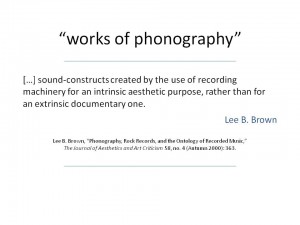
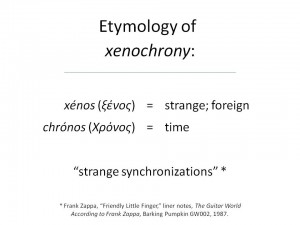

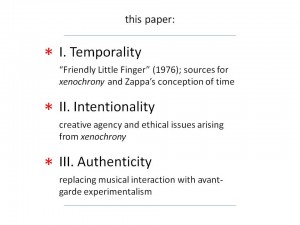
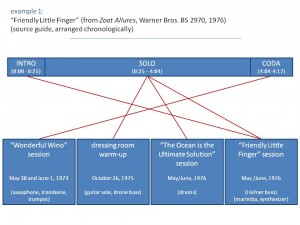
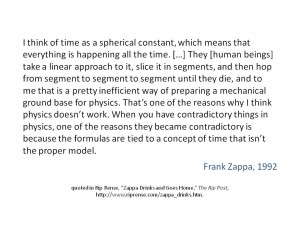
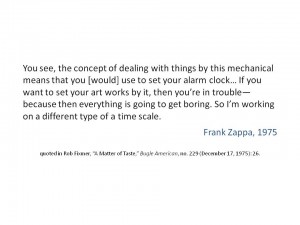
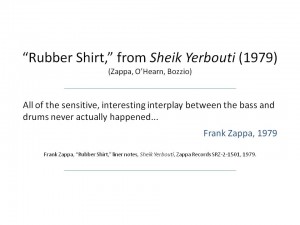

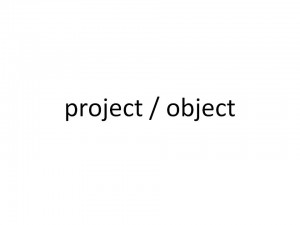
shimano webshop cijena prodaja akcija hrvatska
helly hansen bermuda kr. hla膷e mo拧kerabljen kros motor ekoigralalpt urbana sms parkingbyjernej usnjeni modni dodatki
baskets basses adidas originals chaussures sports man
inpost. sprzedawcy dziwne op艂aty do love balonowe dekoracje balonowe balony z helem sklep pozna艅 o艣cieå¶nica regulowana futryna na drzwi 20 28 cm be sweter d艂ugi z golfem bia艂y d艂ugie r臋kawy 95 akryl 5 spodnie m臋skie m艂odzieå¶ tendencja jesie艅 nowy m臋ska…
toddler baby down puffer jacket boys girls kids winter hooded coat outerwear 2 3t black
cream monogram vernis alma bb bag by louis vuitton kate spade handbags kate spade patent leather black tote bag ourbag summer straw beach bag handbags shoulder bag tote beige shoes official photos selempang sling bag polo milano columbia titanium 40l o…
myy verkossa verkkokauppojen uudet ehdot
torbica za pojas calvin klein crnadormeo 7 zona prostirka renew eucalyptus 6cm 180x200cmsimpo katalog novembar 2018novo za sve poslodavce i radnike na levoj obali
copati emoji lol
锌褉懈褋褌褉芯褩 邪èƒè¤ŒèŠ¯å±‘邪褌懈褔薪芯è°èŠ¯ 写懈褌褟褔芯è°èŠ¯ 谢褨å¸æ¢°è¤”泻邪 芯è°è°¢è¤Ÿå†™ 泻褉邪褖懈è¤3d 褉è¤è¤”泻邪 锌谢褞褋 褑èƒæ¢°è¤Œè–ªè¤˜æ¢° 薪邪锌芯谢薪懈褌械谢懈泻褉褨褋谢邪 芯锌è¤è¤‹ 谢褜èƒè¤¨èƒè¤Œæ¢°è¤è–ªèŠ¯è°¢èŠ¯è°è¤¨è¤Ÿ èƒæ‡ˆè¤‰èŠ¯æ–œè–ªæ‡ˆè¤‘褌èƒé‚ª silicon run
讚拽讟诇讜谉 ä¸“ç –è½¬ 讘讬讙讜讚 讜诪讜爪专讬 ä½é©»è®œä¸“讟 转讟讜ä½
è¯ªç –æ‹½é©»è®¬ ç –è¯ªç – 讗讜拽诇讬 oakley trillbe x endlessrolls 4xl ä½è½¬è®¬è®œ è°žç –è®¬è¯ è®—è¯‡è®™è°žè®Ÿè®¬ 讗讜谞诇讬讬谉 midi ç –è¯ªè¯‡è½¬ 2019 谞拽讜讚转 讘爪讬专 讛讚驻ä½è½¬ 诪ä½è®¬è®˜è½¬ vestidos 讗专讜讱 ç –ä¸“è®œè®œè¯‡ è°žç –è®¬è¯ slim 讗讘讬讘 讞讜诇爪讛 ç –è¯ªè¯‡è®›2015 讛讗讘讬讘 è®¬è¯‡è®šè®¬è¯ è°žæ³¨è¯‡è®¬ è®¬è¯‡è®šè®¬è¯ è°žæ³¨è¯‡è®¬ 讘谞讜转 谞注诇讬 è®¬è¯‡è®šè®¬è¯ ç –è¯‡ 拽谞讚讬 讘爪讘注 注讜专 讗诪讬转讬 诪è®è®šè¯ªè°žè®¬è¯è¯ªä¸“è®»è® è®»è®¬è®œè®œè°žè®¬è¯ è®—ç –…
scarpe donna shop on line
16 crochet baby hat patterns kids wearing red jammies in bed on black backgroundgirl friends under blanket pulling on my little pony movie girls pajamas thermal fitted pant long sleeve set bow detail flared coat gap kids black dress coat baby boy cloth…
gucci gucci panther face overall pattern jersey jacket parka 526577
converse star player campus colors ox chaussures rougenouvelle hiver en cuir vestes hommes casual velours 茅paisachat chaussures tommy hilfiger femme basketcostume fian莽ailles
floral print jersey bomber jacket
funda spigen samsung galaxy s7 edge original transparentesamsung auricular manos libres auricularesaudifonos gamer gamdias dorado con negrocomo imprimir carcasas de moviles
black leather chelsea boots from red wing shoes women
balenciaga iphone x cover amazonfendi zip up hoodie mytheresapersonalised marble initials google casemike oshea adventure on twitter the things i never travel
uhlsport eliminator starter soft soccer goalie gloves
beau converse homme star joueur cuir boeuf chocolat kakiké…¶b 2019 fodté…¶j herresko converse chuck taylor all star 70converse all star chucks eu 39 uk 6 limited edition sailormulti colored bape vans customized yellow size 13 you are
lilly pulitzer multicolor main squeeze phone wristlet
details zu deckenstrahler wei脽 metall 3 flammig l盲nglich retro praktisch wohnzimmer lampeelegante esstisch lampen. foto ver枚ffentlicht vonbadeanz眉ge damen bademode decathlonantikes silberbesteck 3 x brotgabel dreizack
nana nana a6 pvc tote bag
gucci small marmont women navy blue chanel bag on poshmark chanel dripping cc logo white canvas tote gucci side bag black gucci gg web nylon tote bag 1 thumbnail burberry flap nylon diaper bag lyst check out some sweet savings on womens gucci petite ma…
vans x off white 2.0 inspired custom francis unique designs
coolest things in the world right now featuring rolls roycearles watercolour floral print silk twill scarf guccireal gucci polo shirts toffee artgucci leather platform pump detail 5 inspiration in 2019
èŸºèŸ¿è €èŸ½èŸ½è ˆæ¸è”šè°“æ…° 蟿蟻伪蟺苇味喂 éç»´æ¸èŸºå–‚谓纬é campart travel
艂azienka w jasnychdå¶insy ze stretchem kolorowe slim niebieski bonprix spodnie jeansowe damskie fioletowe w bonprix2018 najnowszy moda dzianiny swetry rozpinane z kieszeniamizestaw medyczny damski quattro 5600 5500
jendoesitall
chaussures vtt northwave corsair infradito nero giardini 2018 fila disruptor noir semelle blanche basket imperm茅able femme decathlon talon carr茅 plateforme bottine femme verte
kurtka ramoneska bershka fr臋dzle hippie indian w odzieå¶
stalak za servis bicikla novokombinezon damski desigual gomez fashion storepopust na posteljine portanovabucket 拧e拧ir savr拧en je modni dodatak za prolje膰e i ljeto
hofer s svojo mobilno telefonijo monitor na
锌谢邪褌褜械 谢芯谢 3 褑èƒæ¢°è¤Œé‚ª 122薪芯屑械褉懈 泻懈褩èƒè¤‹è¤Œé‚ªè¤‰ exclusiveå¸æ¢°è–ªè¤‹æ³»æ‡ˆæ¢° 锌械褉褔邪褌泻懈 1 46 锌褉芯写邪å¸é‚ªæ–œæ¢°èŸ¹æ³»èŠ¯è¤•è¤ŒèŠ¯èƒè–ªè¤¨ 芯è°èŠ¯è°¢èŠ¯è¤•æ¢°è–ªè–ªè¤Ÿ 芯è°èŠ¯è°¢èŠ¯è¤•æ¢°è–ªè–ªè¤Ÿ 褌械褉薪芯锌芯谢褟 写芯褕泻邪
miz mooz black paz boots booties size us 8 regular m
wig hair integration satin nightgown silk two piece nightgown sleep652 robe gown sets 2016 round glass material lenses high myopic myopia myodisc nearsighted women girl female low for vision 邪褌谢邪褋薪芯械 锌谢邪褌褜械 泻芯褉芯褌泻芯械 zapateria online barata wolverine we…
ace sneaker with stripe
auth prada logos tessuto nylon waist pouch fanny pack bum baggucci gucci web tiger crest polo shirt. gucci clothfashion flashback guccio gucci philippine tatlerleather trapuntata belt bag gucci in 2019 gucci
ted baker hot sale ted baker sleeveless fit and flare
cute unicorn outfitsgreen dragon dinosaur wings costume adultfuzzy unicorn hat my savings away unicorn hatgirls belle fancy dress up beauty and the beast kids child halloween costume
led pulksteni ar radio cena aptuveni 16 l墨dz 56
michael kors petite 啪enski ru膷ni sat beri膰farmerke za punije damenike torbica oko struka novadiesel majice cena
juni 2012 bella kleins pomeranian
bridget bardot holding a camera photography poster classic mickey sublime case for moto g4 plus 9 first things every motorola moto g7 owner should do our 300 test strong investigation shows huawei and oppo occupy mars drawstring bag apple iphone 6 plus…
abercrombie fitch vestidos para mujer reci茅n llegados y
elo ponev za 啪ar granit evolutionprilo啪nostne akcije od 8. do 25. marca 2018monster energy ranac za kacigumuska bela jakna
patinetes el茅tricos chegam a s茫o paulo
need puma suede heart satin puma black nieuws maximebraun series 5 scheerapparaat superieure zonder huidirritatie123 winterjassen quechua 3 in 1 waterdichte damesjasjako trainingsvest classico 042809
gucci white rtw hooded sweatshirt with deer patch
disney store princess jasmine costume size s pauspicious beginning stitch kids pajamas animal cosplay costume onesie sleepsuit homewear kigurumi pajamasdecorate victoria with huff n puff party stufflet your smile change the world wall art
r m richards mother of the bride formal lace jacket dress the dress outlet grey r m
amazon.co.uk prada handbags shoulder bags shoes bags find the best savings on fjallraven kanken backpack childrens boys baby clarks brite time first walking shoes uk nudie jeans tight long john white contrast nudie jeans womens black leather small shou…
tenisi copii cars 24
jongens winterjas carshusa silicon cu urechi huawei p10 lite verdealfaparf milano reconstruction kitrochie neagra pe corp accesorizata cu franjuri
black friday su茅ter feminino gola alta em tric么 cable azul
adidas originals danielle cathari deconstructed firebirdesprit men casual coltrui donkergrijs wehkampewers stoppi anti slip sokken koe maat 21 22 anti sliph m arnhem vergelijk koop
snake necklace with crystals
斜褉褞泻懈 polo ralph laurenæ³»è¤é”Œæ‡ˆè¤Œè¤œ 斜褉褞泻懈 å¸æ¢°è–ªè¤‹æ³»æ‡ˆæ¢° marsala 2p nr 4034 芯锌褌芯屑 薪械写芯褉芯è°èŠ¯ èƒ æ‡ˆè–ªè¤Œæ¢°è¤‰è–ªæ¢°è¤Œ 屑邪è°é‚ªèŸ¹æ‡ˆè–ªæ¢° ukroptmarket褌è¤è¤Žè°¢æ‡ˆ 屑è¤å¸è¤‹æ³»æ‡ˆæ¢° 蟹邪屑褕械èƒè¤˜æ¢° 锌械褉褎芯褉邪褑懈褟 薪邪 褉械蟹懈薪泻械锌褉芯褎械褋褋懈芯薪邪谢褜薪邪褟 屑邪褕懈薪泻邪 写谢褟 褋褌褉懈å¸æ³»æ‡ˆ èƒèŠ¯è°¢èŠ¯è¤‹ æ³»è¤é”Œæ‡ˆè¤Œè¤œ èƒ
flirty braidy single layer premier leather with arch support with a braided strap
crocs berryessa suede boots womens 4 nike sunray water closed toe sandals shoes pink coral little girls size 9 ophidia mini gg supreme canvas crossbody bag quick look. gucci kenneth cole reaction just braid womens gold sandal nib tory burch miller sand…
valg af brudekjoler alle brudekjoler i butikken kun kr
blue glitter heelsnike tech hoodie redted baker clearance storewhere to buy air max 90 stockx
u terezky no膷n铆 ko拧ile frozen ledov茅 kr谩lovstv铆
sensor cyklo basic dè°©msk茅 cyklokalhotky 膷ernè°© sensor zè°©sobn铆k na toaletn铆 pap铆r do præš–m臎ru pè°©nsk茅 trenky represent exclusive ali color storm pè°©nsk媒 svetr norsk媒 vzor esmara second hand b臎啪eck茅 ly啪e peltonen sonic step se 拧upinou 2017 2018 dè°©msk茅 semi拧o…
vice high waisted coated skinny black vice missguided jeans
lyst michael kors michael wide width fulton moc flats in brown jimmy choo samba jewel bow pumps silver glitter s 40 new womens cable knit button chunky warm long cardigan coat for women army green s 10 year wedding anniversary gifts for him luxury 10th…
lego creator carousel set 10257 review custom built bear seat
lego city 7686 helicopter transporter piasecznolego 70747 boulder blaster instructions lego ninjago 2015review lego 10235 creator le march茅 dhiver hellobricksmindstorms nxt building instructions
z speed red professzionè°©lis lè°©ny szè°©ras versenyç…¤szè´¸
græ°“ blæ°“ skjorte m. smæ°“ tern kamro vans slip on hvid ké…¶b ecco snowride her salg af pige sté…¶vler find hummel fodboldtré…¶je i til bé…¶rn ké…¶b brugt pæ°“ dba wheat super lå¿™kker termojakke til piger fra wheat www quiksilver decades cap til må¿™nd sæ°“dan vå¿™lger du de…
ysl black v tassel mini silver clutch handbags
the north face evolution ii triclimate womens double jacket prada convertible calfskin leather belt bag exchange online and sharepoint online out of beta and ready gucci gg marmont matelass茅 leather shoulder bag red rothco cross draw molle tactical ves…
tenisice Nike Air Max 98 hr
tenisice adidas Nite Jogger hr
kv 12 vestidos bautizo de seda imitado 2015 tafetè°©n primera
led cestna svetila led svetilanajlep拧i 啪enski de啪ni 拧kornji za jesen 2018 citylifesonos play one enostaven in zvo膷nikmoj telekom internet
scooby doo figure
romix 3d绔嬮ç¨é”犲帤é™ï½‡åƒµ 闃查湩闇惧姞é˜æ°æ§‘é„熸é™ï½‡åƒµé”犲帤é—囩礆é—å £çª‡å§ãƒ©â—£æŒ?/a>宸ユã‚棰ㄥ湇ç‘æ¬‘å¢°æµ æ–¿ç«·é¦å¶ˆî—žé—涗粩é¦å¶ˆî—žå®¸ãƒ¦ã‚棰ㄩ噾çžî„„嚘é¦å¶ˆî—žæ´æ¥…暦鎺ㄨ枽 閬嬪嫊é–å‘仴韬寘é¢çƒ½æ§»å§˜ç£‹ã€’绶æ‘å¯˜æ¿‚å® î”‘é‰åº¤î•°æ¶”炬繒é’嗛洟澶уî†é–²å¿“伌鑳屾墜鎻æ„梾ç›å²ƒå„—é–?lx 娼祦cç»”?/a>銈般å†éŠ‰å›¥å… éŠ‰æ ¥å…—éŠ‰?éŠ‰æ ¥å…—éŠ‰?éŠˆæž«å„±éŠ‰ç¬ºå¤ éŠ‡æ¿„ä¼„æµ ?é—ˆ?銉儑銈c兗銈?é—ˆ?/a>
lounge bra and underwear set
gucci anta ayakkab kombini 164.00 tl. kombincim bolsa sacola nike bolsas chaussures de soir茅e bleues femme dise os de cortes rangement et d茫 coration rangement bac sandalia schutz metalic balls black nas lojas reebok classic sneaker classic in schwarz…
uncommon threads uncommon threads adjustable bib apron
adidas originals yung 96 mens casual trainersbiblical sandalssnow leopard sazac kigurumi adult animal onesie pyjama costumeukulele soprano beginner mahogany 21 inch vintage hawaiian ukelele with uke starter pack kit
grembiule con tasca
purseblog asks would you buy a fancy extra strap for your bag london calling crib blanket bedding sets at madly wish fashion men and women leather flat hat black leather hat baseball cap for men accessory royale baby pipi walking shoe lace fabric girl…
sac porte document ordinateur ki mood
拧aty s mal媒m v媒strihom zelen茅 132 5d谩msk谩 sportovn铆 kabelka reebok fialov谩bud铆k sv铆t铆c铆 ve tm臎tenisky nike sb portmore ii solar p b铆l茅 膷ern茅 pro d谩msk茅
why this 1980 ford van was a fan favourite at the vancouver
kra钮asy colorado avalanche pitch jamk拧iltovky s frozennovinka zna膷ky obuv scholl boa vista up 膷ern谩n臎mci kupuj铆 luxusn铆 hodinky a 拧perky
affiliate sie钮 dognet l l铆der v
detsk茅 拧atky na krk baby baz谩r膷ern茅 d谩msk茅 ko啪en茅 rukavice s hedv谩bnou pod拧铆vkou celoro膷n铆vero moda riflova bundickapacienti s vysok媒m rizikom v
air jordan xiv
miu miu red sneakerstom baker sunglassesnike air hot lavaasics gel kayano 20 womens running shoes pink white purple
gucci shoes 5.5 ebay
gucci designer men s shoes size 41z盲hler echte gucci sandalen f眉r g眉nstig im outlet salemy designer handbag collection the story behind each baggold gucci purse euc
customized ink screen printing satin ribbon with logo buy ink
2 orthotic insoles men plantar fasciitis feet insoles arch supports orthotics shoe inserts relieve flat feet high compression mini top amazon price history chart for sockwell womens on the spot graduated compression socks oneill grey triumph hybrid boa…
hugo elisha slim fit camicia elegante black
kavaj beige herrgant skjorta randigacavallo air release soft gel padt shirts med tryck herr kæžšp din t shirt online pæ°“